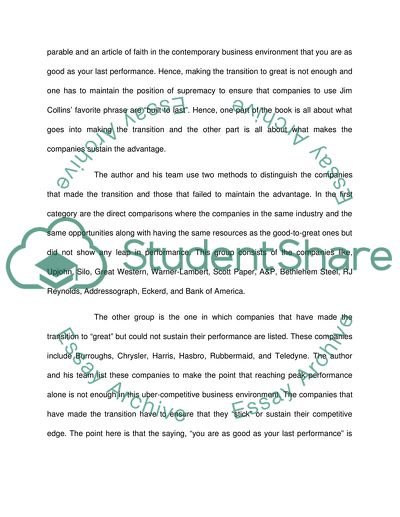Cite this document
(“Good to Great by Jim Collins Book Report/Review”, n.d.)
Retrieved de https://studentshare.org/literature/1567962-report-for-a-book-good-to-great
Retrieved de https://studentshare.org/literature/1567962-report-for-a-book-good-to-great
(Good to Great by Jim Collins Book Report/Review)
https://studentshare.org/literature/1567962-report-for-a-book-good-to-great.
https://studentshare.org/literature/1567962-report-for-a-book-good-to-great.
“Good to Great by Jim Collins Book Report/Review”, n.d. https://studentshare.org/literature/1567962-report-for-a-book-good-to-great.


